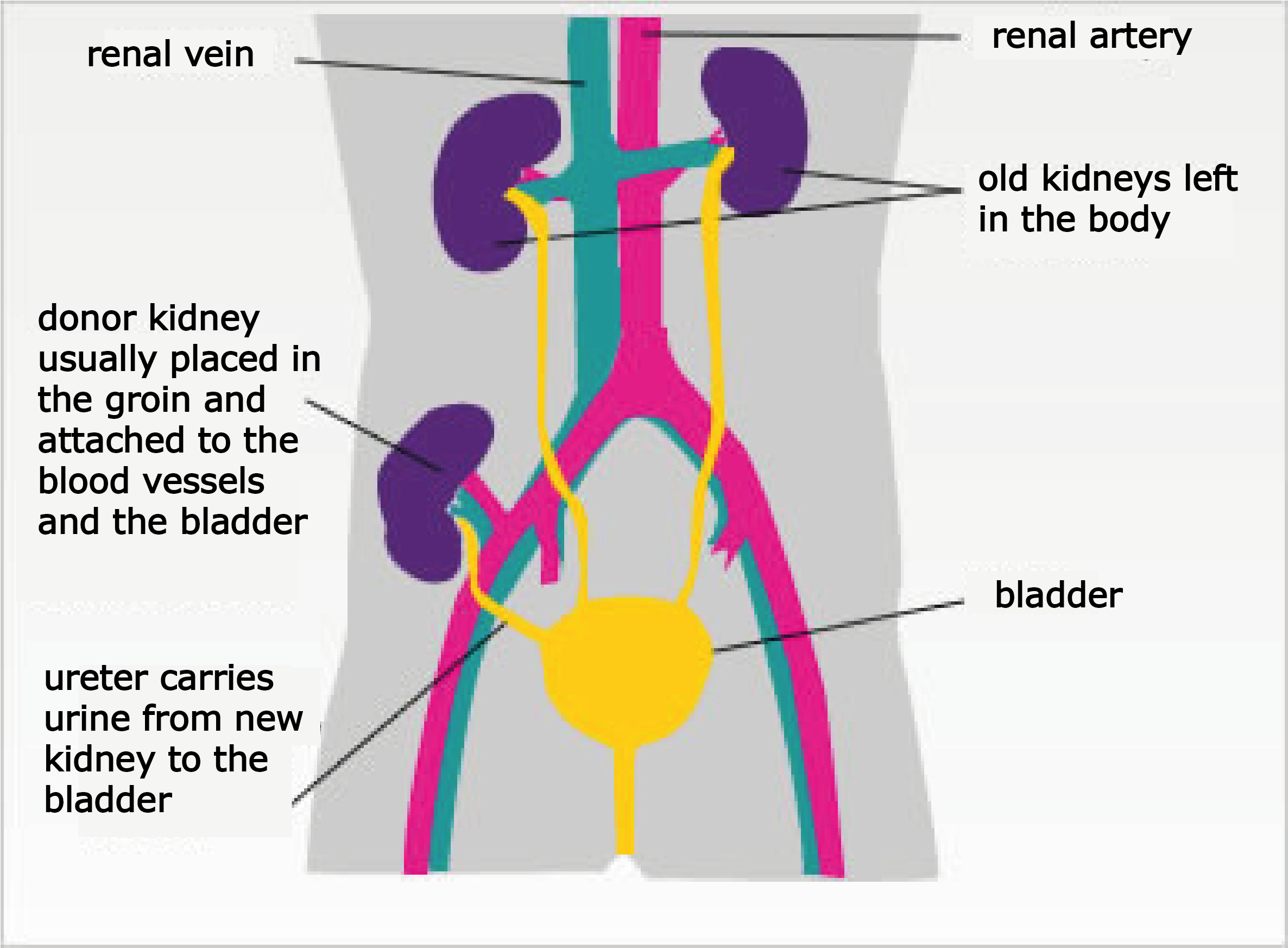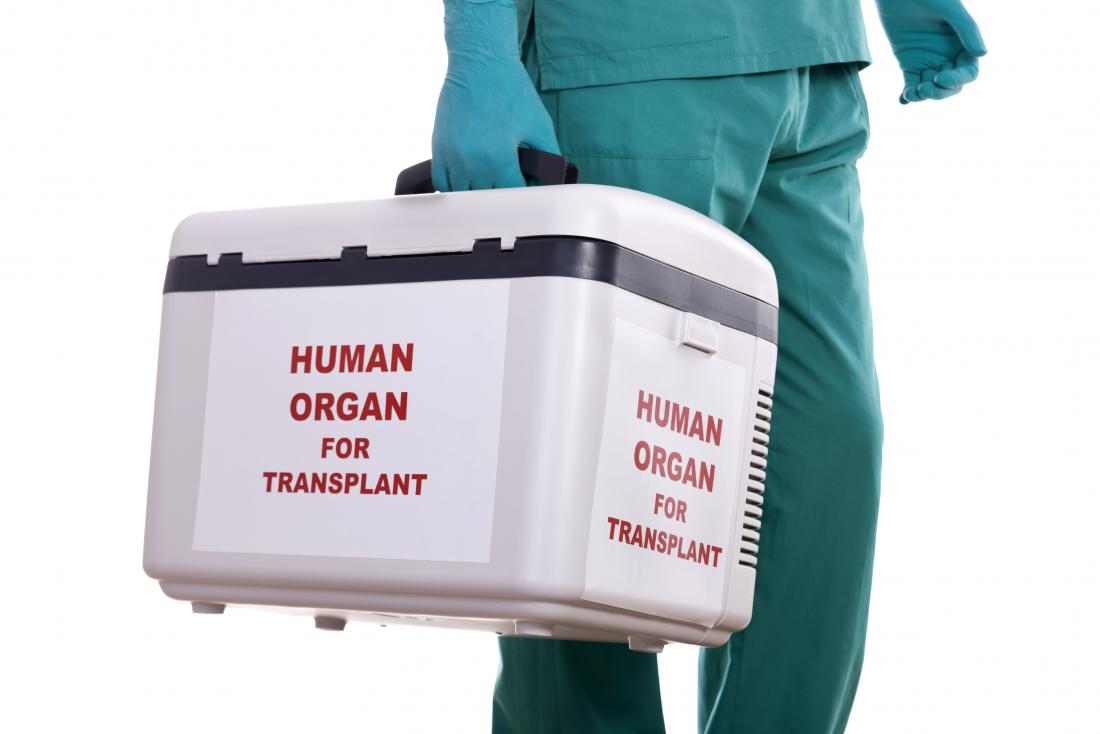This topic takes on average 55 minutes to read.
There are a number of interactive features in this resource:
 Biology
Biology
 Human biology
Human biology
 Physical education
Physical education
If the kidneys fail completely they may be replaced by a kidney transplant. In a transplant the functions of the failing kidneys are taken over by a single healthy kidney from a donor. The donor kidney is joined to the blood vessels and the bladder in the groin of the patient (the recipient) and shortly after a successful transplant urine begins to flow from the new kidney. If all goes well the transplanted kidney will function normally in its new body, cleaning and balancing the blood.
One kidney is enough to remove the waste urea and balance the blood of an individual for the rest of their lives. However, most transplanted kidneys only last about 9 years. Once they begin to fail again the patient will have to return to dialysis or have another transplant if a donor becomes available.
One big problem is rejection. The protein markers (antigens) on a kidney are usually different from a patient's protein markers. The patient's immune system detects this difference and may reject the new kidney. Immunosuppressant medicines are used to suppress the immune system to prevent rejection.


The other big problem with kidney transplants is that there are not enough donors to go around. In the UK alone about 2500 transplants are carried out each year but there are still around 7000 people on dialysis waiting for a transplant. Most kidneys come from people who have died in an accident or have died suddenly from a stroke or similar event. Better car safety and better medicine mean fewer people are dying - good news but giving fewer donors. More healthy people are choosing to donate one of their kidneys to someone with kidney failure. They are known as living donors. In future stem cell technology may allow us to grow new kidneys for anyone who needs them.